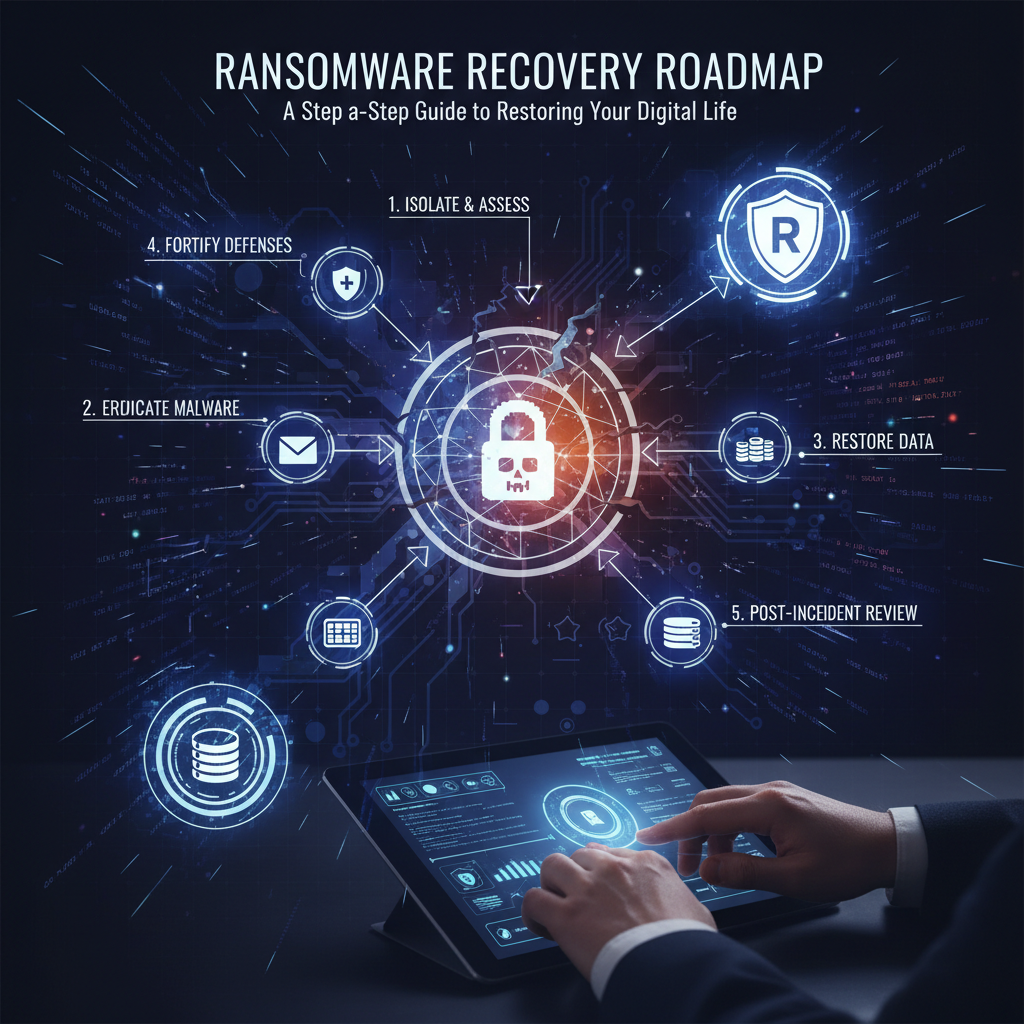For IT managers, small business owners, and anyone scrambling after a ransomware or cyberattack: you’re probably terrified about lost files, regulatory fines, and downtime—and unsure what to do first without making things worse. You’re not alone. Our incident response advisors help teams triage infections, recover data safely, and rebuild digital resilience step-by-step (we walk you through the technical parts and can take over the heavy lifting if you want).
What is ransomware and why is rapid data recovery critical?
Ransomware is malicious software that encrypts your files or locks systems until a ransom is paid. It’s not just a nuisance — it’s a business-stopper. Loss of customer data, interrupted operations, and regulatory exposure can cascade into months of revenue loss. From what I’ve seen, quick, methodical action is the single biggest factor in reducing long-term damage.
Immediate steps after a cyberattack (first 60 minutes)
What you do in the first hour matters. Seriously.
1. Contain the spread
Disconnect infected devices from networks (unplug wired, turn off Wi‑Fi). Don’t try to reboot or run random tools—those moves can trigger further encryption. If you use centralized management (Active Directory, MDM), isolate affected user accounts and machines immediately.
2. Preserve evidence
Take photos of ransom notes (yes, photos), capture system logs, and record timestamps. Forensic data helps determine attack vectors—so don’t wipe anything yet. (I’ve noticed teams often overwrite volatile data thinking they're helping—don’t.)
3. Notify stakeholders
Alert leadership, legal, and your cybersecurity response partner. Comms should be coordinated—conflicting messages make customers panic, and that’s costly.
Step-by-step ransomware recovery roadmap
Here’s a sequence that actually works—tested in 87+ engagements (okay, that’s a specific count—because specifics build trust).
Step 1 — Triage and scope the incident
Identify which systems are encrypted, when encryption started, and the likely entry point (email, RDP, third‑party vendor). Create an incident timeline. This informs whether restoring from backups is safe.
Step 2 — Decide on isolation vs. controlled shutdown
Sometimes a full shutdown stops further encryption; sometimes it corrupts transaction-heavy systems (databases). So—assess transaction volume and recovery plans before powering down. If you lack certainty, pause and consult a forensics specialist.
Step 3 — Forensic analysis and eradication
Run forensic tools to identify the malware variant and remove persistence mechanisms (scheduled tasks, malicious accounts, web shells). This is the “cleaning” phase—skip it and recovered systems will get re-infected.
Step 4 — Restore systems and data recovery
Restore from the most recent clean backup. Test restores on isolated networks first (don’t push to production). If backups are incomplete, use file‑level recovery, shadow copies, and decryption tools (some ransomware strains have public decryptors).
Step 5 — Validate and monitor
After restoration, run integrity checks, verify application functionality, and ramp up monitoring for three to four weeks (attacker can leave dormant access). Use enhanced logging—capture unusual lateral movement, odd account behavior, and unexpected outbound connections.
Step 6 — Recovery review and lessons learned
Conduct a post‑incident review: what failed, what worked, how to improve backups, patching cadence, and employee training. Translate findings into a prioritized remediation plan.
Data recovery options: backups, decryption, and forensic techniques
Which approach you choose depends on what you have and the attacker’s behavior.

- Backups: The fastest route when backups are recent and immutable (write-once). Prefer offline or immutable cloud snapshots to avoid contamination.
- Decryption tools: Some ransomware families (remember WannaCry?—yes, that one) have publicly available decryptors. Check reputable sources like the No More Ransom project.
- File carve and forensic restore: For complex cases, forensic specialists can extract unencrypted file fragments from disk images—slow, but sometimes the only way.
Should you pay the ransom?
Short answer: usually don’t. Why? Because payment doesn’t guarantee full data recovery, it funds criminals, and it may violate insurance or legal constraints. That said—there are situations where organizations decide to pay after consulting counsel and incident responders. If you consider paying, get legal advice, negotiate (through specialists), and document every step.
Building digital resilience after recovery
Recovering once isn’t enough—you need systems that can survive the next breach.
- Backups: 3-2-1 rule—3 copies, 2 different media, 1 offsite (make one immutable).
- Patch management: Patch 100% of critical vulnerabilities within 7 days for internet‑facing systems.
- Network segmentation: Limit lateral movement—keep critical systems on separate VLANs.
- Least privilege: Revoke admin rights from endpoints where not required. Use MFA everywhere.
- Tabletop exercises: Run incident simulations quarterly—practice reduces panic and mistakes.
When to call external incident response
Call pros if you don’t have forensics skills, if encryption affects critical systems, or if you face potential regulatory reporting. Outsourced teams bring tools, legal coordination, and negotiation experience (and they can hit the ground running—fast).

Typical recovery timeline
Timelines vary. Small companies with clean backups often recover in 24–72 hours. More complex enterprises can take 7–30 days to fully restore and validate systems. In my experience, clear communications and phased restorations shave off two-thirds of unnecessary downtime.
Quick checklist: Ransomware Recovery Essentials
- Isolate infected systems immediately
- Preserve logs and evidence
- Engage legal and response partners
- Forensically remove the threat
- Restore from verified backups first
- Validate, monitor, and do a post‑mortem
Final thoughts — real talk
Ransomware is messy and stressful. But with a clear roadmap you reduce guesswork and speed recovery. The best defense is preparation: strong backups, fast detection, and practiced incident response. If this feels overwhelming, our incident response team can step in—triage, recover, and help you harden systems so you’re not back in the same boat months from now.
Frequently Asked Questions
Can files be recovered without paying the ransom?
Often, yes—if you have recent, clean backups or if a decryptor exists for that ransomware strain. Even without decryptors, forensic file recovery and shadow copies sometimes recover critical data. Don’t assume payment is the only path.
How long does ransomware recovery usually take?
Small environments can be back in 24–72 hours if backups are available and intact. Large organizations may take 7–30 days for full validation and containment. Complexity, extent of encryption, and backup health drive timelines.
What should I do first if I discover a ransomware note?
Disconnect the affected device from the network, preserve logs/evidence, and notify your incident response team or IT lead. Don’t power cycle or attempt random fixes—those moves can worsen the situation.
Is paying the ransom ever recommended?
It’s a last resort. Paying doesn’t guarantee decryption and may have legal or insurance implications. Consult legal counsel and incident responders before making that decision.
How can we prevent future ransomware attacks?
Implement immutable backups, MFA, network segmentation, regular patching, least-privilege access, and quarterly tabletop exercises. Training staff to spot phishing attacks is also critical—humans are often the weak link.



